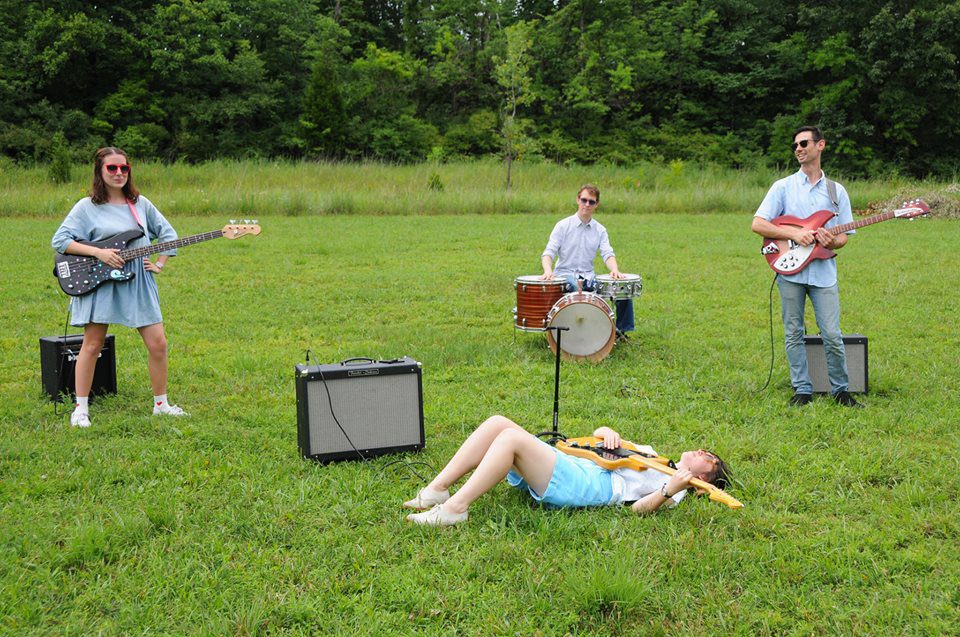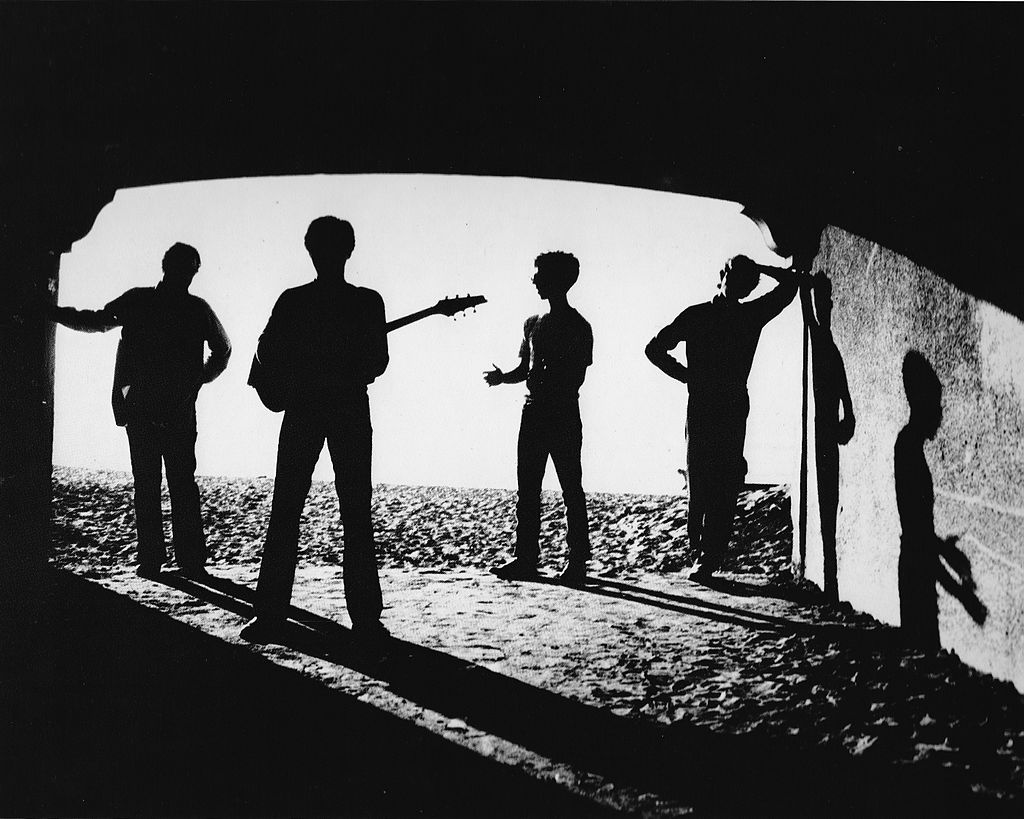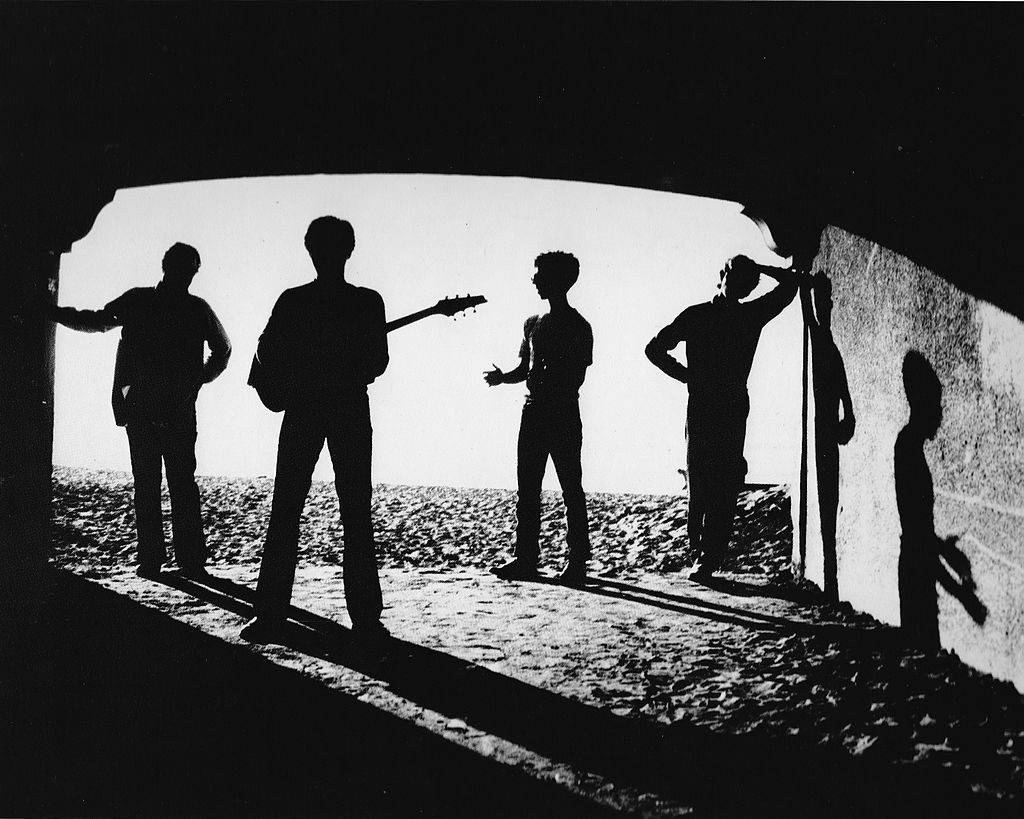PLAYING BLOOMINGTON: Amy O on Zine Culture and Basement Pop

Seventy low laps around the track
You’ll want to look back
From Ohio to the east onto the midwest
Time pools in the past
Amy Oelsner (otherwise known as Amy O) has been fine-tuning her brand of grunge-infused basement pop since 2004. Although some might know her as one-half of the Bloomington-based duo Brenda’s Friend (alongside Erin Tobey), Oelsner has been focusing on her solo career as of late. Over the years, Amy O has gradually shifted away from a folk minimalism and towards a heavier and fuller sound, yet her lyrics remain unabashedly personal and genuine. Oelsner (guitar, vocals), supported by her backing band of Madeline Robinson (bass/vocals), Justin Vollmar (drums), Damion Schiralli (guitar), and Aaron Denton (keys/vocals), has been busy performing in venues across town while preparing for her upcoming tour and album release.
Over the years, Amy O has worked hard to refine and develop her songwriting skills. In high school, she took up the guitar and began learning to write songs. Yet aside from playing in a few bands at college, much of the music that she created over the next eight years remained largely unshared. However, participating in a song a day project pushed Amy O to self-release four albums in 2012. As Amy O’s songwriting confidence grew with each release, she learned to push harder and become unapologetic about writing from her perspective.
Oelsner admitted that in her earlier songwriting, she was anxious about being labeled as “girlie.” Unfortunately, we still live in a heterosexist patriarchy that relies on the false notion that there is a natural, biologically rooted gender binary where men are associated with masculinity and females are associated with femininity (and the former is deemed superior to the latter). Things that are thought as having “feminine qualities” are therefore coded as being less substantial. “Girlie” becomes a subtle way to call something “frivolous,” or “infantile.” However, being read as “feminine” and making music that is perceived to be “girlie” is not better or worse than anything else. Amy O’s music breaks down these false dichotomies by demonstrating that good songwriting has more to do with practice and developing a skill than with whether music sounds “hard” or “soft,” “raw” or “polished.” Since moving to Bloomington, Amy O has been recording and performing regularly. Arrow was released in February 2016 via Bloomington’s Let’s Pretend Records.
Amy O’s upcoming album, Elastic, continues in the direction she has been moving towards for a while now. Even more stylized than Arrow, Elastic hones in on her basement pop aesthetic while establishing a fuller sound. Elastic will be released August 4th off of Winspear, a local record label in town.
When she isn’t busy performing at local venues such as the Bishop and Jan’s Rooms, Amy Oelsner has quite possibly the coolest day job ever, leading the Zine Making Program at Rhino’s Youth Center in Bloomington. As the Assistant Director and the Creative Writing Program Director, Oelsner has filled almost every position at Rhino’s; the Zine Making Program is her newest passion. This ongoing workshop puts out a quarterly zine, each focused on a different theme, which is voted on by the participating teens. Last quarter’s zine, Neurodivergence, focused on issues of self-care and mental health. A previous issue, LGBTQ+ Teen Resource Guide, concentrated on gender and sexuality.
When introducing them to the teens at Rhino’s, Amy Oelsner defines a zine as a “self-published little book that can have writing or drawing or really anything. It’s part of the D.I.Y. culture and is something that has been around for a really long time.” Oelsner has been reading zines since she was a teenager, growing up in Fayetteville, Arkansas. Doris and Cometbus are two of her favorites. When questioned about why the specific format and style of zines are so important for those who are trying to share their story, Oelsner added, “It’s inherently a safe space. There’s something about it that’s just like, this is my space to be myself, and share my views. A lot of people don’t feel like they have that in their life and I think that’s why it is so important to people.” According to Oelsner, zines provide a space for people who might otherwise be ignored or misrepresented by the mainstream media to share their own story and perspective. Teenagers, for instance, don’t often get the opportunity to share their own stories. Oelsner’s zine making workshop works to break down these discords.
In addition to being a safe space to tell one’s story, Oelsner also argues that zines are especially equipped to resonate with and connect subcultural “outsiders” because of their relatability. As pieces of material culture that embrace the D.I.Y. aesthetic, zines are purposefully rough around the edges. Because zines move directly from the producer to the reader without having to pass through gatekeepers (editors, publicists, journalists, etc.), the messages that they relay are raw, uncut, and genuine. Furthermore, this aesthetic encourages readers to participate actively in the scene. Readers are inspired to pick up the scissors and glue sticks, and share their own stories.

As zines circulate – often shared with friends and family members, sold at community centers, and distributed at shows – their stories have the ability to affect people outside of their immediate radius. LGBTQ+ Teen Resource Guide, for instance, somehow made its way to a school library in Ohio. Oelsner’s own upcoming zine, Yoko Oh Yes, which features female musicians, will be sold alongside her other merch on tour this summer. This zine will also include illustrations from Bethany Lumsdaine and Jessie Grub, local zinesters (and graduates of the Rhino’s zine workshop) who publish Shut up and Listen alongside their own radio show.
Amy O moved to Bloomington, Indiana in 2013, after living in Fayetteville, Arkansas, Oberlin, Ohio, Northampton, Massachusetts, and, most recently, Brooklyn, New York. Understandably, she had a number of things to say about why the Bloomington punk scene stands out among the rest. While New York City, for instance, is an established hub for artists, it is notoriously difficult to live there as a musician. Rent is high, there is very little space to practice loud music, and music venues (especially D.I.Y. ones) are constantly closing due to corporate push-outs and rising rent in rapidly changing neighborhoods. The scene is fast-moving, and largely anonymous. In contrast, most Bloomington shows take place in the basements of houses, or in D.I.Y. venues that replicate a house show set up. Houses and venues become established and develop their own reputations and fan bases. The same faces can be seen from one show to the next. According to Oelsner, the scene almost purposefully maintains some old fashioned practices. For instance, people still tend to flyer for their shows. In short, the scene is smaller, more personal, and extremely supportive of local artists. This supportive environment fosters a number of collaborative projects. Amy O, for instance, collaborates with Erin Tobey, Nice Try, Vollmar, Spissy, and Laughing Gas.
Amy O’s upcoming full-length album, Elastic, will be out August 4th via Bloomington’s Winspear. Oelsner will be touring this summer to promote Elastic and her upcoming zine Yoko Oh Yes. Locals can catch her up in Indianapolis on June 17 at the Hi-Fi.




